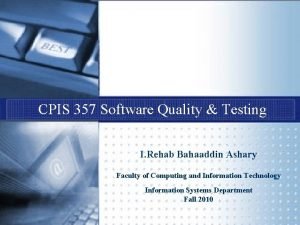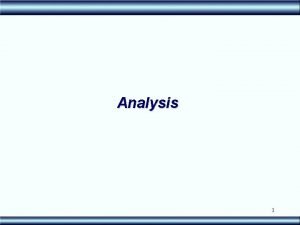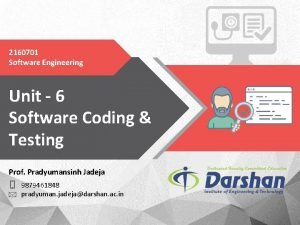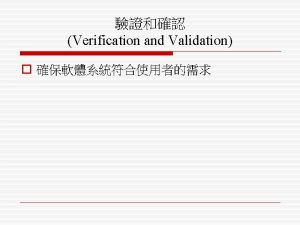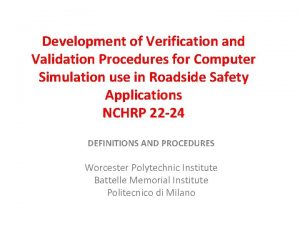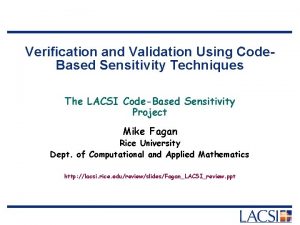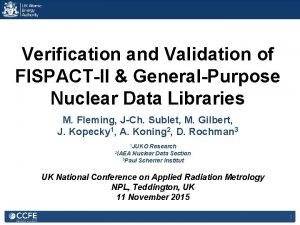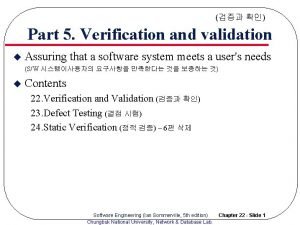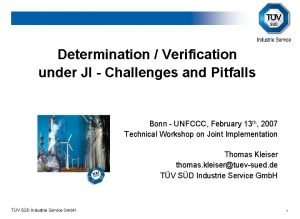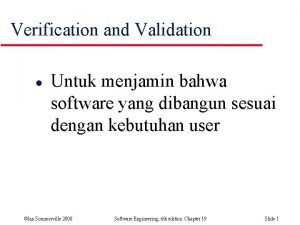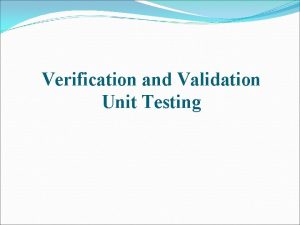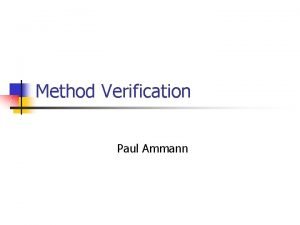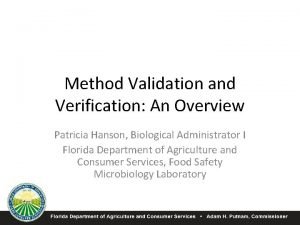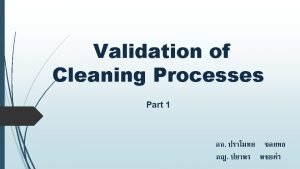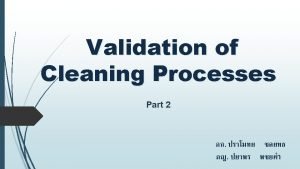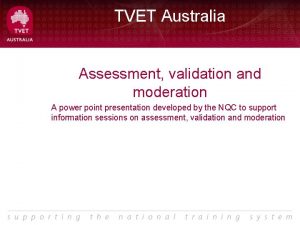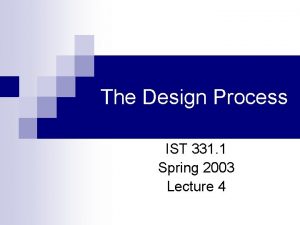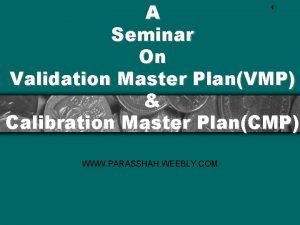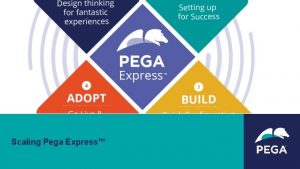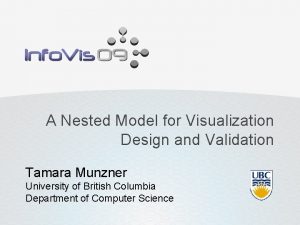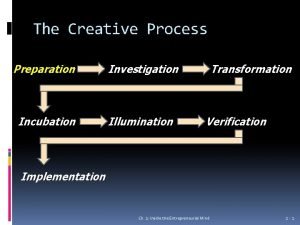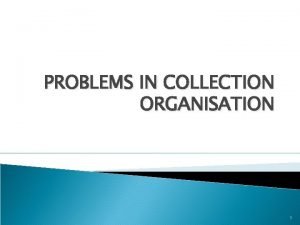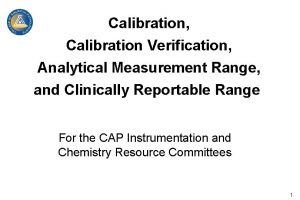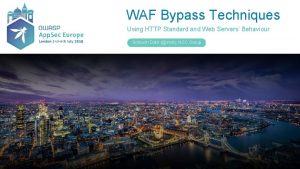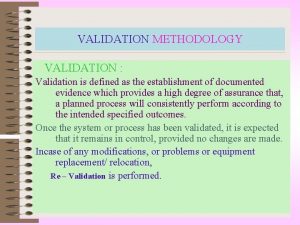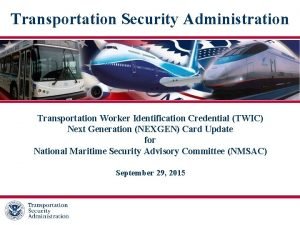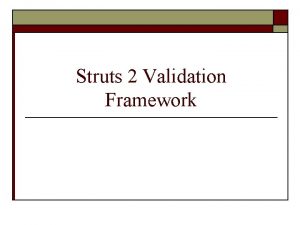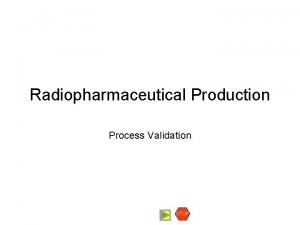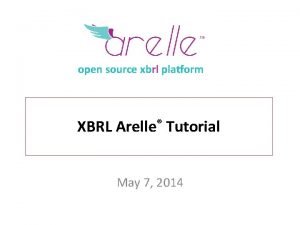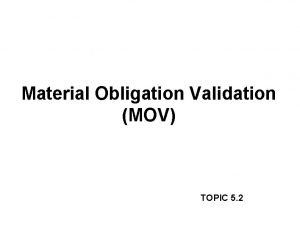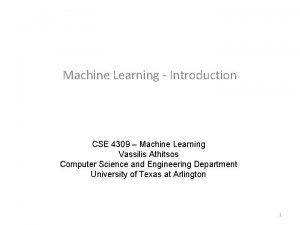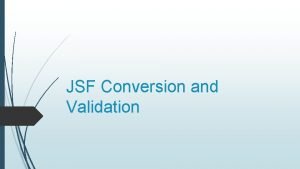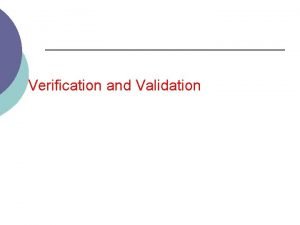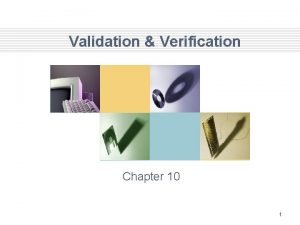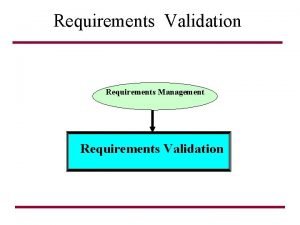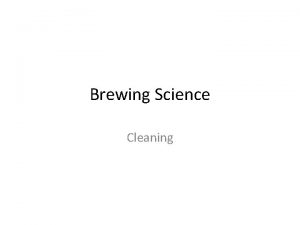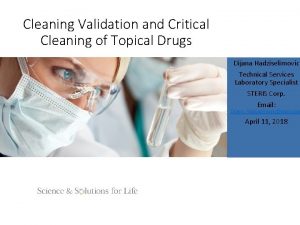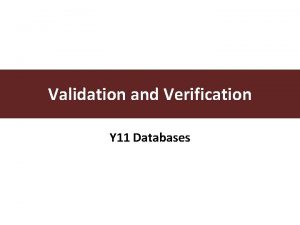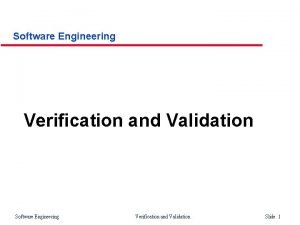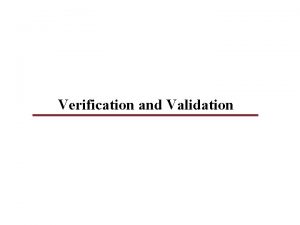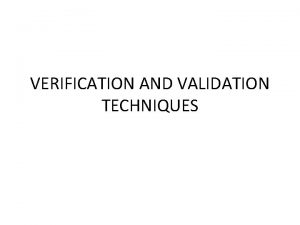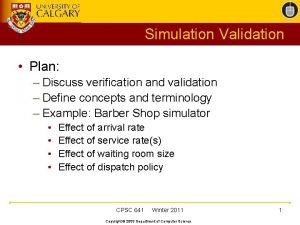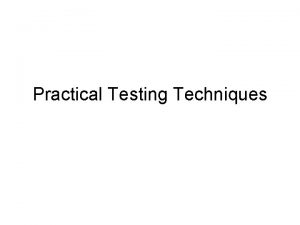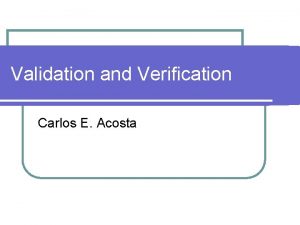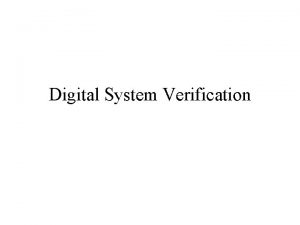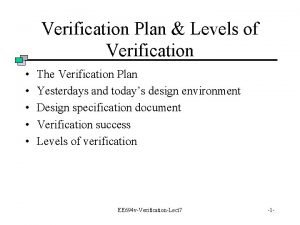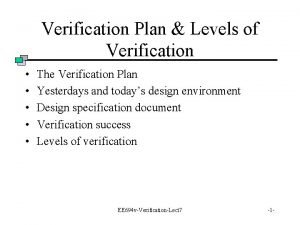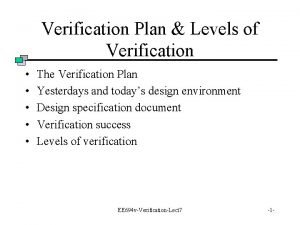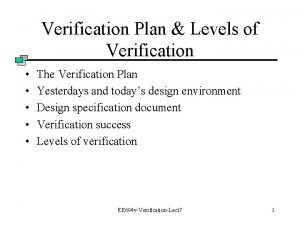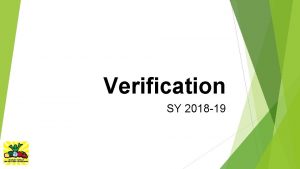Managing Cleaning Validation Monitoring and Verification of Cleaning


































- Slides: 34

Managing Cleaning : Validation, Monitoring and Verification of Cleaning Programmes Prof Chris Griffith Food Research and Consultancy Unit University of Wales Institute, Cardiff Copyright © Prof Chris Griffith, UWIC 2008 UWIC

FAO / WHO Pan European Conference on Food Safety February 2002 “Foodborne disease caused by microbiological hazards is a large and growing public health problem” “Most countries with systems for reporting foodborne disease have documented significant increases” Copyright © Prof Chris Griffith, UWIC 2008 UWIC

Surfaces: Microorganisms, Cleaning and The Food Processing Environment UWIC

Transient v Resident Pathogens • Transient – Relatively easily removed by cleaning – Limited amount of product affected • Resident – Become established, multiply and persist – Significant amount of product affected Copyright © Prof Chris Griffith, UWIC 2006 UWIC

Examples of Lm Plant Persistence by Product Cheese 11 month – 7 years Fish months – 4 years Ice cream 7 years Meat months – 5 years Poultry 12 years Tompkin Journal of Food Protection UWIC

Surface Counts and Product Contamination • 4 yr Listeria monocytogenes study –JFP 2008 • 46% product isolates and 41% surface • Persistent strains even after cleaning /dis infection – 2 year period • Strains on gloves /floors Copyright © Prof Chris Griffith, UWIC 2006 UWIC

Maple Leaf Plant Reopens after Listeria Outbreak • 20 Deaths and estimated Cost of $20 m –Aug /Sept 2008 • CEO said the slicing equipment at the plant will now be subject to stricter cleaning and testing , including disassembling The CEO said the machines had been cleaned on a daily, weekly and monthly basis but it wasn’t until the machines were disassembled that they found the area where the bacteria had become embedded Copyright © Prof Chris Griffith, UWIC 2009 UWIC

Surface Counts and Product Contamination! “ SEM showed rods and cocci attached to handling and cleaning tools Genetically similar strains ( 100%) were isolated from cleaning and handling tools and associated RTE Transfer of pathogens from cleaning tools to food may hold food safety implications” Christison et al 2008 Copyright © Prof Chris Griffith, UWIC 2008 UWIC

End Product and Surface Testing Both are Important BUT End Product Testing tells you something has gone wrong Surface testing tells you if something may go wrong Both tell you something about your systems Griffith, 2008 Copyright © Prof Chris Griffith, UWIC 2007 UWIC

Summary Food Industry Environmental surface sampling recognised as important. One study suggests if an organism is found in the environment there is a 70% chance of it getting into the food. IAFP Rome 2007 UWIC

Other Reasons Why Cleaning is Important In Addition to Food Safety • Pleasant and safe work environment (removes dirt and grease) • Auditor/ customer confidence (promotes favourable image) • Removes bacteria and food on which bacteria grow • Aids pest control (removes food and pests easier to see) • Enables disinfection • Increased product shelf life and equipment performance • Reduction in: – Food wastage Surface deterioration – Customer complaints Wear and tear – Physical contamination Copyright © Prof Chris Griffith, UWIC 2008 UWIC

Cleaning • Removal of soil Disinfection • Destruction or removal of microorganisms • Aim: to reduce to an acceptable level - little or no risk Sanitising • Cleaning process with an additional element of disinfection (detergent / disinfectant) UWIC

How to Test for Cleanliness: Characteristics of an Ideal Method • Detects microorganisms and food residues with sufficient sensitivity • Works equally well on wet and dry surfaces • Repeatable / Reproducible • Easy to use • Rapid • Cheap • Foolproof / recordable UWIC

Assessing Cleanliness • No ideal method • Any testing usually better than none but limitations recognised UWIC

Food Industry Perspective “Monitoring cleaning is a vital component of cleaning management” “In isolation visual assessment is not a good indicator of surface cleanliness” Griffith, 2005 Handbook of Hygiene Control in the Food Industry Copyright © Prof Chris Griffith, UWIC 2007 UWIC

Microbiology Why is swabbing always used as the reference point? UWIC

Microbiology • No accepted standard / optimum method • ISO 18593 • Highly variable results Moore G and Griffith, C. J. (2007) Problems Associated with Traditional Hygiene Swabbing: The Need for Standardisation. Journal of Applied Microbiology; 103: 10901103 UWIC

ISO 18593 – Surface Sampling Techniques • • • Covers swabbing and contact methods Swabbing diluent Clean and disinfect after sampling Sponges / cloths 100 cm 2 Lot of variability allowed • • • Low temperature swab transport 1 -4 C < 24 hrs Contact plate 4 hours Results used for “trend analysis” Use of Rt sampling pattern Contact plate not recommended for pathogens Copyright © Prof Chris Griffith, UWIC 2006 UWIC

Microbiology: Considerations • Is useful as part of an integrated approach • What do you need to know – Cleaning or contamination • General contamination: presence/absence of pathogens • Nature / shape of surface • Direct/ Indirect contact • Care with wetting solution if swabbing UWIC

Non Microbial: Food Component Residues Sole or Combination • ATP • Protein • Reducing Sugar • Other UWIC

Relative Merits of Component Residues • Universality - wide range foods • Quantity in food • Sensitivity of Test • Other – cost – time taken – simplicity • Horses for courses! UWIC

What is Clean? • What is acceptable / Fitness for purpose ? • What is attainable? UWIC

Setting Standards: Why? • “Cannot manage what cannot measure” • Need to know where you are • Benchmarking • Scientific approach Copyright © Prof Chris Griffith, UWIC 2007 UWIC

What is Acceptable? • USDA <5 cfu / cm 2 • SFSA Target Max • EU / UK Meat legislation <10 cfu / cm 2 1 cfu / cm 2 Enterobacteriaceae 1 cfu / cm 2 3 cfu / cm 2 Copyright © Prof Chris Griffith, UWIC 2005 UWIC

What is Attainable? Product Pass Count Fail Dairy and other high risk <150 151 -299 >300 Raw meat <1000 1001 -1999 >2000 Cooked meat <250 251 -499 >500 Convenience RTM <300 301 -599 >300 Veg / high risk <250 251 -499 >500 Copyright © Prof Chris Griffith, UWIC 2005 UWIC

Mean and Range ATP for Named Food Sites Site Mean ATP Range ATP Tap Handle 9, 821 182 to 145, 143 Equipment Handle 37, 032 2, 756 to 150, 00 Bin Lid 15, 433 25 to 500, 000 Copyright © Prof Chris Griffith, UWIC 2005 UWIC

Range Micro Counts for Named Sites Site Minimum Maximum Tap Handle <2. 5 cfu/cm 2 100 cfu/cm 2 Equipment Handle <2. 5 cfu/cm 2 >250 cfu/cm 2 Bin Lid Copyright © Prof Chris Griffith, UWIC 2005 UWIC

Assessing Cleanliness • Integrated approach for maximum benefit • Selection based on: – Risk – Soil types – Microbial load – Cleaning method • Assessment – consider failure costs as well as implementation costs UWIC

Choosing a Luminometer Copyright © Prof Chris Griffith, UWIC 2005 UWIC

Choosing a Luminometer : Considerations • Sensitivity/ limits of detection • Repeatability and Reproducibilty • Other –ease of use , technical support, reliability UWIC

Choosing a Luminometer • Electronics –PMT/photodiode • Extractant—microbial cells • Reagents and background levels • Lab : Field Trials UWIC

Other Reasons for Testing Cleaning Effectiveness • In addition to managing cleaning testing useful in: + + + Outbreak investigation Identification of reservoirs Benchmarking Education Cost efficiency and financial management Risk Assessment UWIC

Summary 1 • Presence of pathogens in vicinity of RTE represents significant risk • Outbreaks linked to poor cleaning and prosecution • Environmental sampling provides indication of cleaning efficacy • Provides early warning of possible problems Copyright © Prof Chris Griffith, UWIC 2005 UWIC

Summary 2 • Assessing cleanliness valuable in Management • Cleaning validation, monitoring and verification • • Variety of test methods Integrated Strategy: micro and non-micro ATP valuable rapid technique Not all Luminometers the same –proper evaluation needed • Use as part of a Coherent protocol Copyright © Prof Chris Griffith, UWIC 2005 UWIC
 Verification and validation
Verification and validation Verification and validation
Verification and validation Verification and validation
Verification and validation V model verification and validation
V model verification and validation Asme v&v 10
Asme v&v 10 Verification and validation
Verification and validation Verification and validation
Verification and validation Verification and validation plan
Verification and validation plan Verification and validation
Verification and validation A software verification and validation method. section 19
A software verification and validation method. section 19 Software verification and validation plan
Software verification and validation plan Is unit testing verification or validation
Is unit testing verification or validation Method verification vs validation
Method verification vs validation Method verification vs validation
Method verification vs validation Pharmaceutical validation
Pharmaceutical validation Apic cleaning validation guidelines 2014
Apic cleaning validation guidelines 2014 Moderation and validation of assessment
Moderation and validation of assessment Ist 331
Ist 331 Validation and calibration of master plan
Validation and calibration of master plan Pega express
Pega express A nested model for visualization design and validation
A nested model for visualization design and validation Illumination in creative process
Illumination in creative process Verification principle strengths and weaknesses
Verification principle strengths and weaknesses Shelf rectification and stock verification
Shelf rectification and stock verification What is analytical measurement range
What is analytical measurement range Request validation bypass
Request validation bypass Wpf validation.errortemplate
Wpf validation.errortemplate Types of process validation
Types of process validation Twic card validation
Twic card validation Struts2 workflow
Struts2 workflow Protocol for process validation
Protocol for process validation Xbrl tutorial
Xbrl tutorial Material obligation validation
Material obligation validation Why we use validation set
Why we use validation set Jsf converter
Jsf converter
